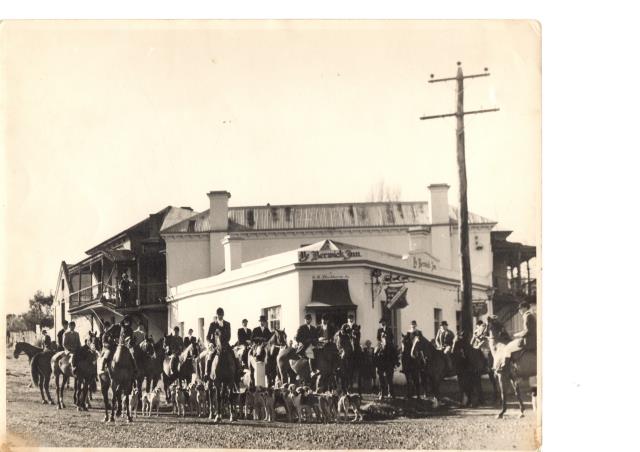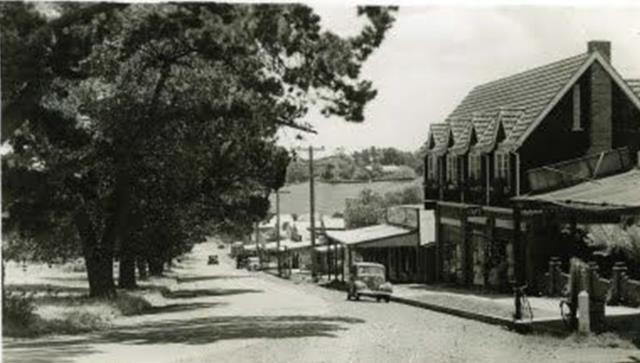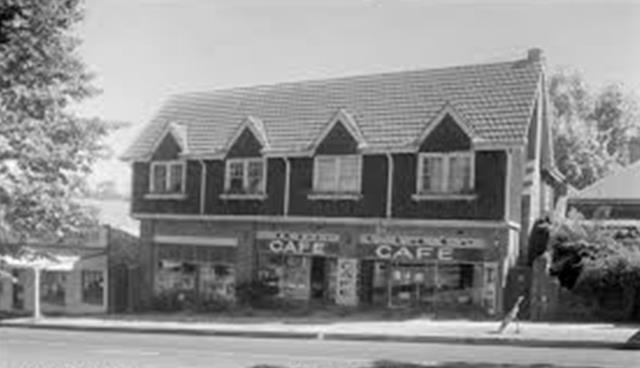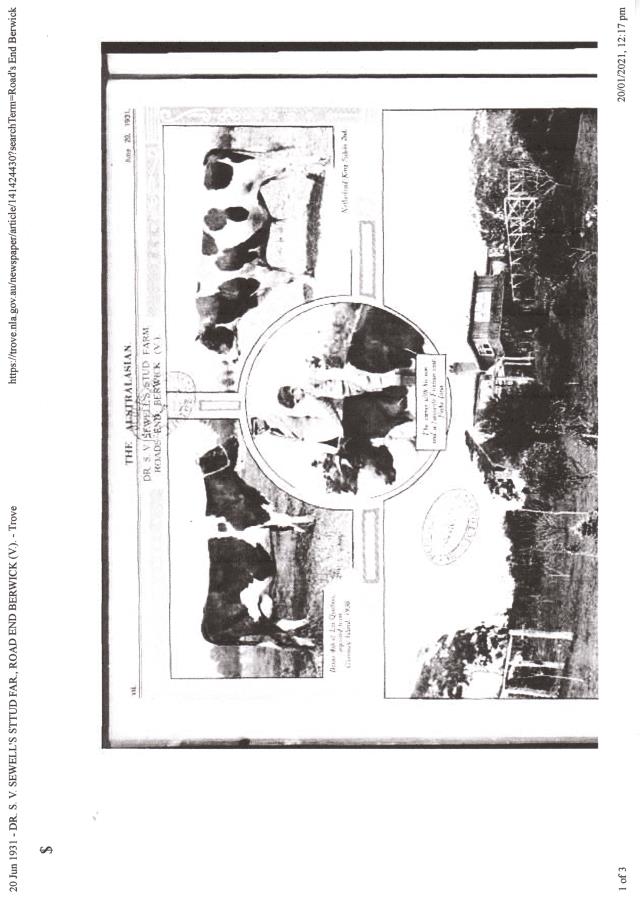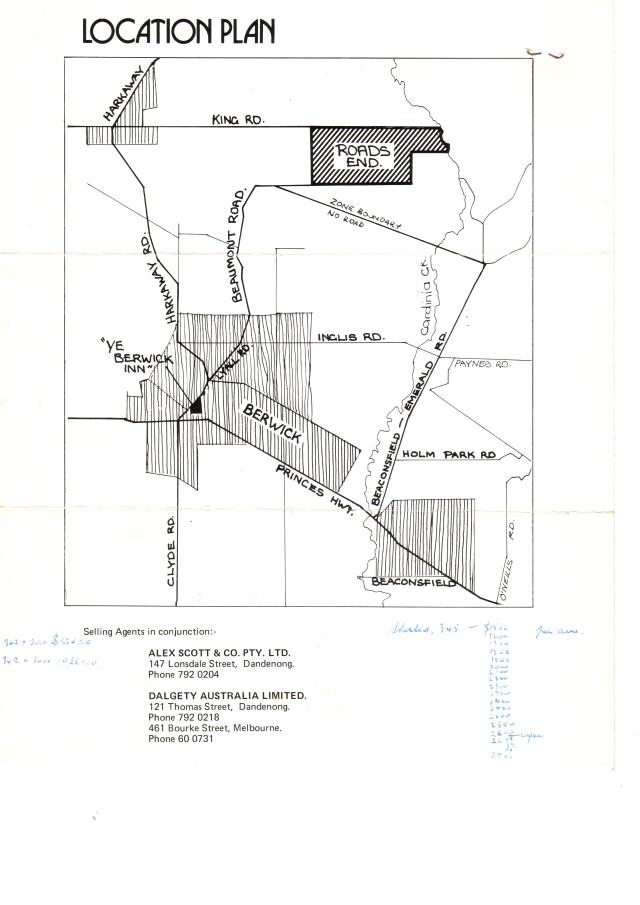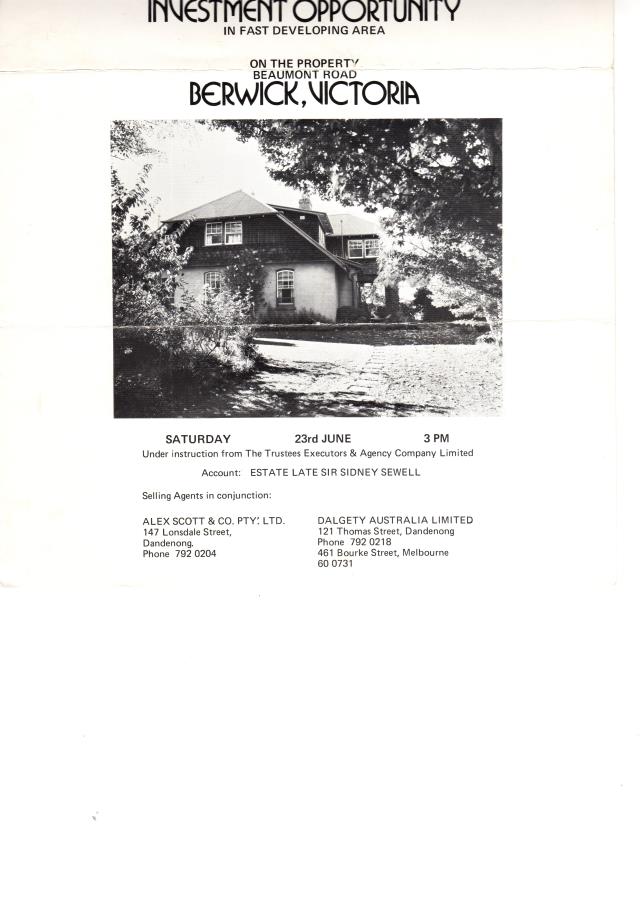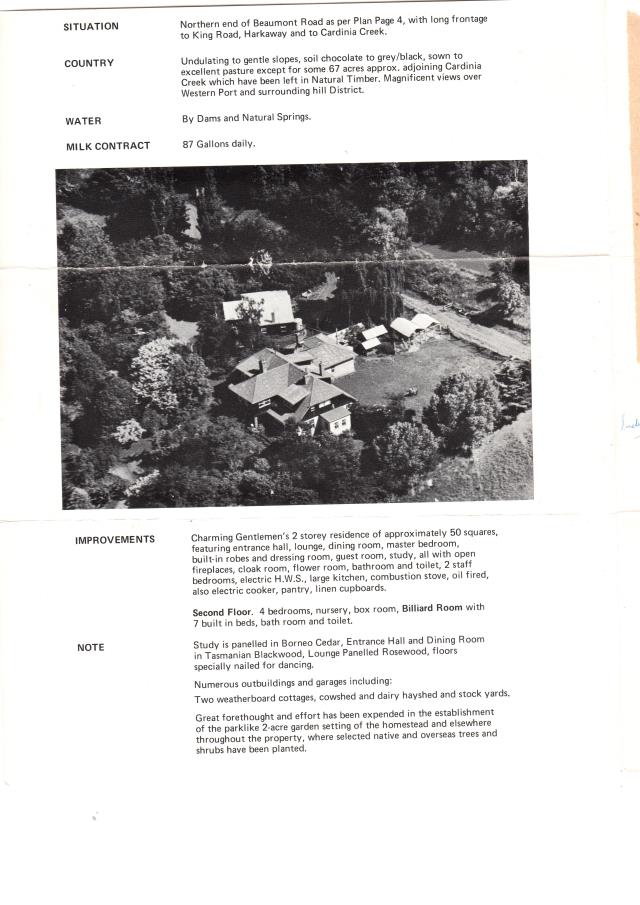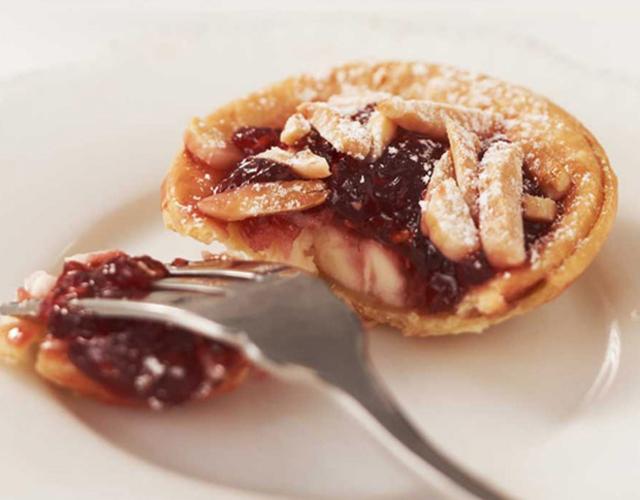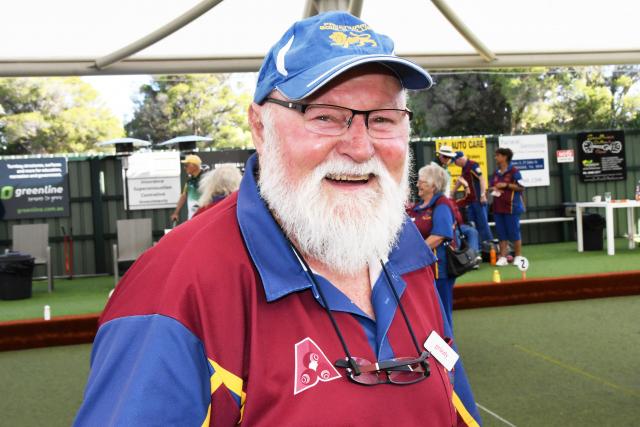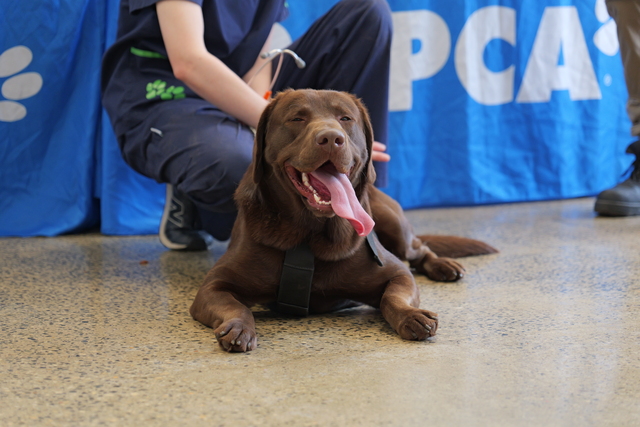A small stretch of road in the Harkaway hills marks the huge contribution of Sir Sidney Sewell, not only to the district but to the field of medicine, where he led the national response to tuberculosis, as NEIL LUCAS explains in his latest look at the significance of street and place names in the region.
Sidney Sewell (later Sir Sidney Sewell) was the youngest of 10 children of engineer and English immigrant Richard Sewell and his wife Emma.
Born in February 1880 at Ballarat, young Sidney was educated at Caulfield Grammar School and aspired to become a medical doctor.
Alas the financial crash in the 1890s necessitated Sidney taking up employment which he did, teaching for two years at Hamilton College prior to commencing medical studies at the University of Melbourne.
Sidney was a brilliant scholar and graduated MB, BS in 1905 with first class honours in all final year subjects.
Dr Sidney then commenced as a medical officer at the Melbourne Hospital and lectured in pathology at the university.
In 1908 Sidney married Alice Cunning at St Stephen’s, Elsternwick and the married couple travelled to England where Sidney studied at University College, London.
Retuning to Melbourne in 1910, Sidney was awarded his MD and began private practice in Collins Street Melbourne.
After a brief time at St Vincent’s Hospital, Sidney was appointed as physician to out-patients at Melbourne Hospital (later Royal Melbourne) and also undertook lecturing in neurology at the university.
Sidney was rejected for service in World War I due to a continuing infection following an appendix operation. This disappointed him greatly and he took a special interest thereafter in caring for servicemen suffering from shell shock.
In June 1919 Sidney and Alice began their association with Berwick when they purchased a 335 acres (136 hectares) farming property at the end of Beaumont Road (the front gate at that time was located approximately 250 metres east of the sharp right-angle bend in Beaumont Road).
The Road’s End property encompassed all of what has been developed as the Farm Lane area, Hilden Drive and Sewell Drive and had a northern boundary along King Road which stretched to the Cardinia Creek in line with King Road.
It was described as containing gentle undulating slopes, chocolate to grey/black soil with natural bush adjoining the Cardinia Creek with magnificent views over Western Port and surrounding hills.
Sidney enjoyed a great interest in exotic species of trees and plant and developed the property’s two acre garden surroundings with some species provided by an acquaintance Government Botanist Baron von Mueller.
Sidney arranged a partnership with the adjacent land owner Edwin Flack (Australia’s first Olympian and Gold Medallist 1896) and they farmed as a dairy operation with Friesian and Guernsey cattle.
Sidney imported Guernsey cattle and became so informed in the breeding and stud development that he became an accredited dairy judge at agricultural shows including the Sydney Royal Show in 1929.
Sidney won three first prizes at the Berwick Show in 1934 with his Guernsey Cow, Yearling Guernsey Heifer and Yearling Guernsey Bull.
Flack and Sewell ran more than 300 pure-bred dairy cattle on their pastures and produced milk and cheese under the name Burnbank Cheese. Sidney also bred Southdown stud sheep on the property.
The problem of the disease mastitis in dairy cows was of concern to Sidney so in 1940 he offered his property to the Australian Dairy Cattle Research Association as a testing site. A herd of 49 cows was established and systematic observations were made by a veterinary research officer over a period of five years.
In the same year Sidney and Alice made the property available to the Country Women’s Association Land Army for lectures and practical experiences in farm management and operation – about 20 young women attended.
Sidney, during the 1920s had become involved with the diagnosis and treatment of pulmonary tuberculosis (TB) and travelled to London and the USA to learn more about this subject. Over more than 20 years he took up the cause of establishing special facilities to support and treat patients. He received little support in many areas and was frustrated with the Government’s responses.
The Minister for Health of the day suggested Sidney’s criticism “political and personal and full of inaccuracies” and wondered whether Sidney’s advocacy of isolation of patients meant that patients should be “herded into a concentration camp”.
Sidney travelled widely lecturing in his crusade to make improvements in the prevention and treatment of TB. Following a lecture in Sale in 1946 the local paper recorded:
TUBERCULIN MENACE GOES UNCHECKED INSUFFICIENT BEDS AND STAFF FOR KNOWN CASES
Time for State to Take Satisfactory Stand.
Speaking at the Hospital Sunday at the Prince Regent Theatre on Sunday last, Sir Sydney Sewell, one of the foremost Victorian authorities on tuberculosis, its cause and its treatment, said that the time had come when a definite stand should be made on the treatment of tuberculin sufferers. During 30 years, little advance had been made in the discovery of the disease in Victoria. In all known cases tuberculin symptoms were advanced and hospital treatment was necessary, but there were no beds, no nursing staff and no domestics to cope with the cases. He advocated that the X-ray of all age groups be made compulsory, that school children be skin-tested and if the reactions were positive, that all precautions be taken to ensure that the symptoms did not develop. The disease was the greatest killer known of age groups between 15 and 45 years and until Victoria advanced with other parts of the world little could be hoped for”
At a lecture at the Royal Melbourne Hospital given in 1948 he was quoted as follows: “For God’s sake come out of your shell. It’s your duty to talk and write until this dreadful condition is ended”. The Government formed a Consultative Council on Tuberculosis and appointed Sidney as a member. It is accepted that much of the Government’s actions to eradicate TB were a consequence of Sidney’s advocacy.
During his medical career Sidney served as president of the Australasian Association of Physicians (a body which he co-founded in 1930 and which later became the Royal Australasian College of Physicians), MD degree examiner at the University of New Zealand, member of the RAAF research committee, and was for many years the Stewart Lecturer in Medicine at Melbourne University. Sidney was elected as an Honorary Fellow of the Royal College of Physicians, London in 1939. In his 60s, he returned to full-time duties during the Second World War and was knighted in 1945.
Sir Sidney established a group of shops in the Berwick High Street. Two of the shops on the ground floor were originally occupied by Jan’s Tea House later known as The Blue Plate Cafe.
Sir Sidney and Lady Alice produced two sons and five daughters – Jim, Willoughby (Bill), Mary, Joan, Susan, Elizabeth and Patience.
Lady Sewell was born in 1881 and was educated at Presbyterian Ladies College and Melbourne University.
With Ethel Osborne Lady Sewell co-founded the Lyceum Club, a ladies club in Melbourne in 1912. Modelled on the London Lyceum Club, membership was open to ladies with a university degree.
Before her marriage Lady Sewell taught at Tintern Grammar, but on coming to live in Berwick entered into public life with membership of the St Margaret’s School Council, CWA Berwick Branch (president and district vice-president), Red Cross, and Berwick Pre-School Group. The Pre-School Group raised funds in the community for the construction of a Pre-School and Baby Health Centre which was established on the north-west corner of Wilson and Wheeler streets (now the car park on the high side of Dan Murphy’s).
One of the Sewell’s sons Jim followed his father into the medical profession and one of their daughter’s Elizabeth served as the Sports Mistress at St Margaret’s School Berwick for many years. A Mounted Girl Guide Company had previously been formed at the school in 1932.
Following a request from the school’s principal Elizabeth Sewell established the St Margaret’s Pony Club which was open to residents of the Berwick area. So successful was the club that it ceased to continue solely as a school activity and became the Berwick Pony Club. The gymnasium at St Margaret’s School was named the Elizabeth Sewell Gymnasium in her honour in 1968. Elizabeth also bred Scottish Terriers at Roads End, recording the arrival of a litter in the KCC gazette in May 1948.
Another daughter Mary was a keen horsewoman and regularly rode with the Melbourne Hunt.
Describing Mary’s debut in 1930 the magazine The Home reported: “Miss Mary Sewell is the eldest of Dr and Mrs Sidney V Sewell’s daughters, and has made her debut during our last season. She hunts with the Berwick Hounds and is an intrepid horsewoman. As her parents, since moving from that quaint old house in Collins Street, which was once the Governor of Victoria’s town residence, have made Road’s End, Berwick, their permanent home, she has plenty of opportunity for indulging her taste for hunting, as the district is one of the most favoured places for meets of Melbourne and Berwick hounds.”
Many a social occasion was conducted at Road’s End. One such event in 1934 was a farewell to an English cousin Nancy Sewell who was returning to the Lakes District in England after an 18-month sojourn in Australia.
An article in the social pages of the Argus described the scene at Road’s End – “Last night her cousins gave a delightful dance to enable a number of friends to wish her bon voyage and au revoir before she leaves once more for England. Great bowls of vivid gladioli brought radiant colour into the picturesque house, and many guests motored up from town to share in the pleasure of a party in the country, and the joy of motoring home in the cool hours of the early morning. Miss Mary Sewell chose a delicate tone of seagull grey; Miss Joan Sewell’s picture frock was of pastel patterned silk organza, and Miss Betty Sewell wore snowflake white. The guest of honour wore a chiffon frock patterned in blossom pink and black. Among those who accepted invitations were – Mr and Mrs S Greave, Mrs Arthur Morris and Mr and Mrs Norman Beaumont.”
The Melbourne Herald also reported on the event – “an old house, but it has captured the atmosphere of England. There are large rooms which obviously have been lived in and enjoyed; their walls are panelled with woods brought from abroad and pictures by well-known artists such as Septimus Power and Heysen. People coming from overseas have described the property rather than the house as typicallv Australian. Hunting girls were well represented by the hostess, Miss Mary Sewell. University students were there in shoals, as the second daughter of “Road’s End“ is an undergraduate.
When Sir Sidney died in March 1949 at the age of 69 years the State Premier Holloway announced “Sir Sidney Sewell’s whole life has been one of service to the community. Thousands of people will feel grateful to him for the wonderful part he has played in the fight against TB.“

